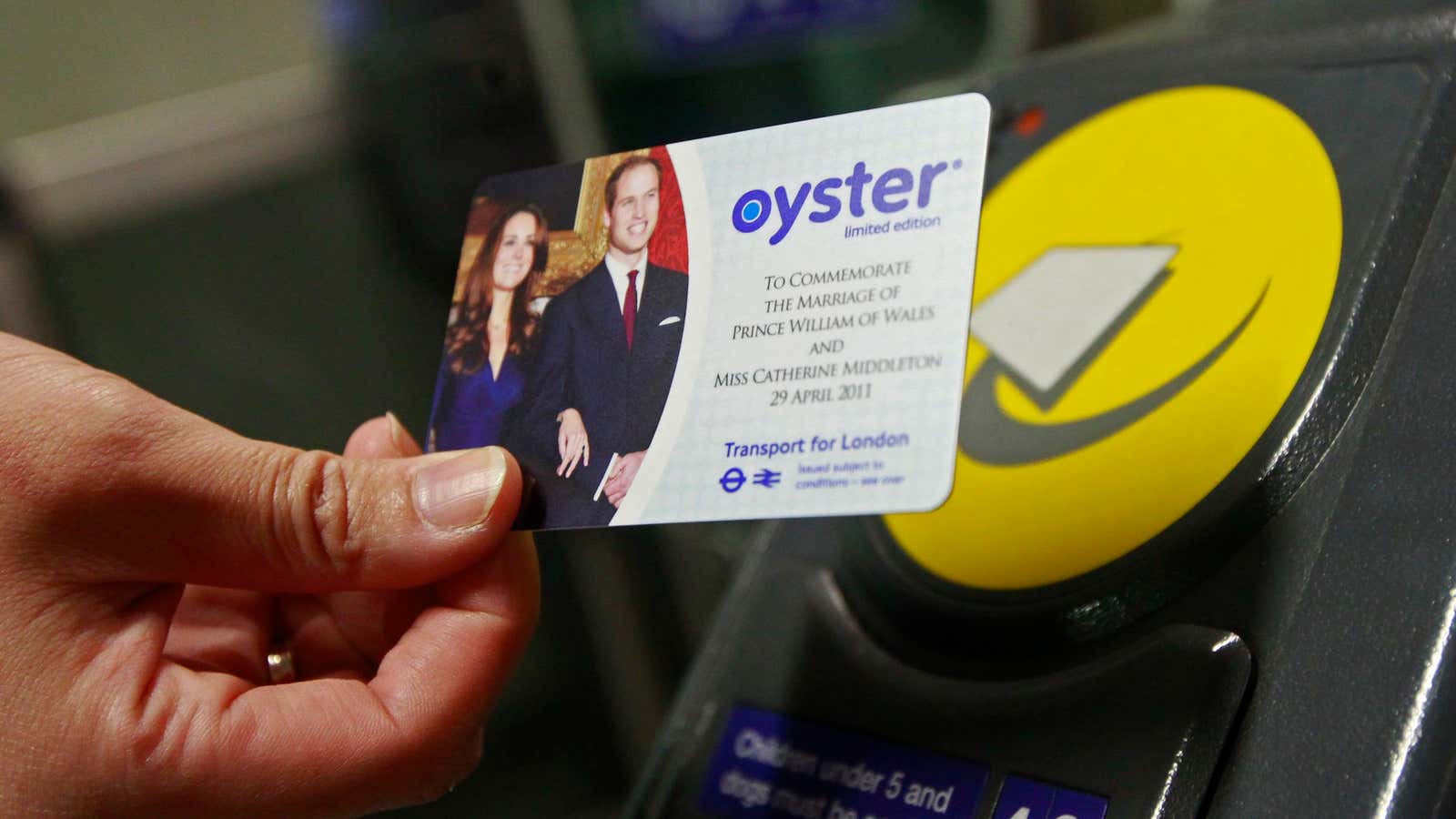Buses in London no longer accepted cash fares as of early this morning. To buy a ticket to take one of London’s beautiful new Routemaster buses, you’ll have to use a variety of methods that some public transport commuters outside the UK have never seen before.
You can use an Oyster card, the electronic card available since 2003 that holds multiple travel passes or simply cash, which is deducted every time you touch in and out of the Tube and bus system. Practically every Londoner has one. Transport for London said that only 0.7% of all bus journeys were paid for with cash anymore. To make sure older or vulnerable people don’t get lost, TfL has a ”one more journey” feature for Oyster cardholders, which allows a single extra trip if you have insufficient credit. TfL said the move to cashless fares will save it $41 million a year.
Bus tickets in London can also be bought with contactless cards, which are part of all new debit cards in the UK. They don’t require signatures to spend up to £20, or $34 per transaction. That means all you have to do is tap it against the machine to buy a coffee and your sandwich, and also your bus ticket.
Contactless cards are becoming ubiquitous pretty much everywhere—except the United States. The number of these cards is estimated to hit 250 million this year, led by the UK, Australia, Canada, Japan, and others. But the US has yet to adopt even the previous technology: chip-and-pin cards. These cards, where you type a code to authorize a transaction, were invented in 1996 and are standard throughout Europe and elsewhere. There are 1.6 billion around, but they remain mostly non-existent in the US. The lack of chip-and-pin adoption was partly blamed for the security breach of 40 million cards at retailer Target in January.
In New York, the country’s biggest metropolitan transport hub, commuters still swipe in to the subway and buses using a flimsy and fiddly Metrocard that holds no information other than the amount of money on the card. New York’s transport authority hopes to go contactless by 2020. By which point, London and other major cities will likely be on to the next big thing.




